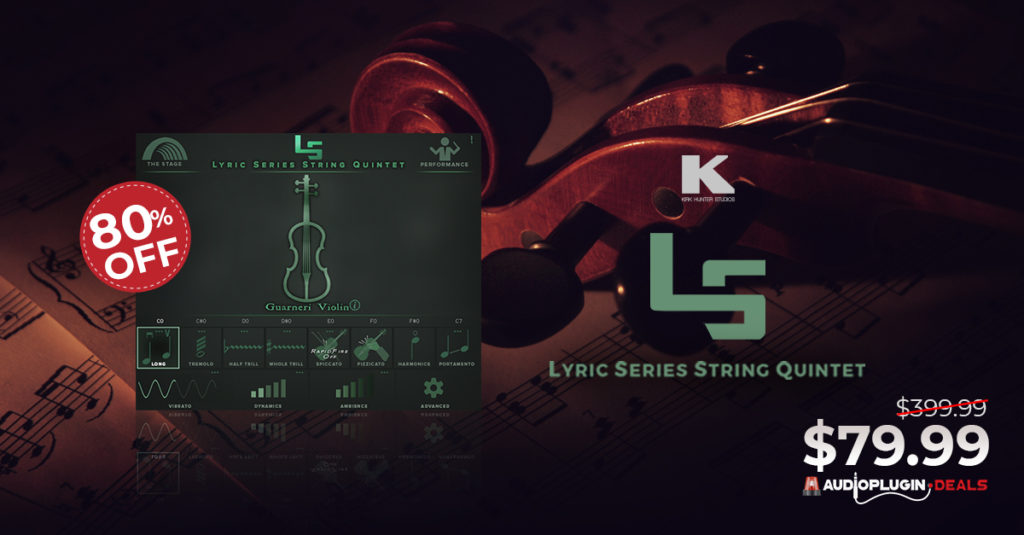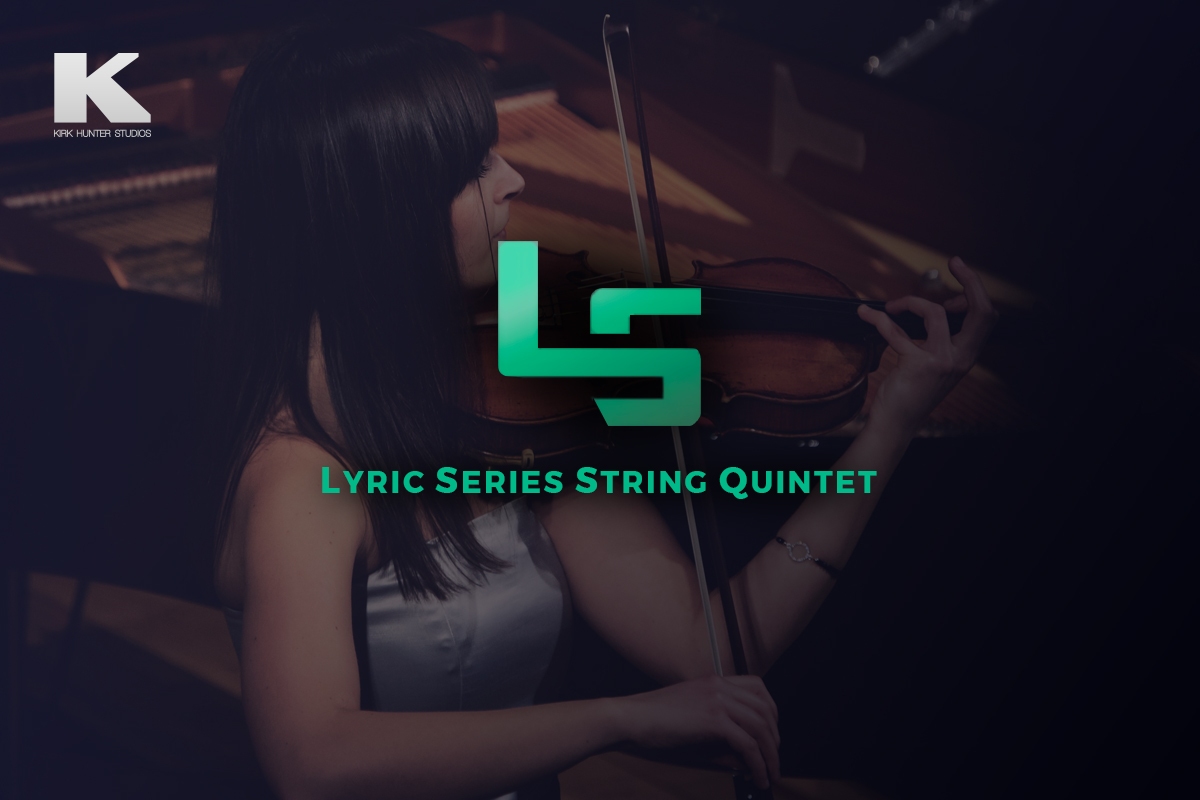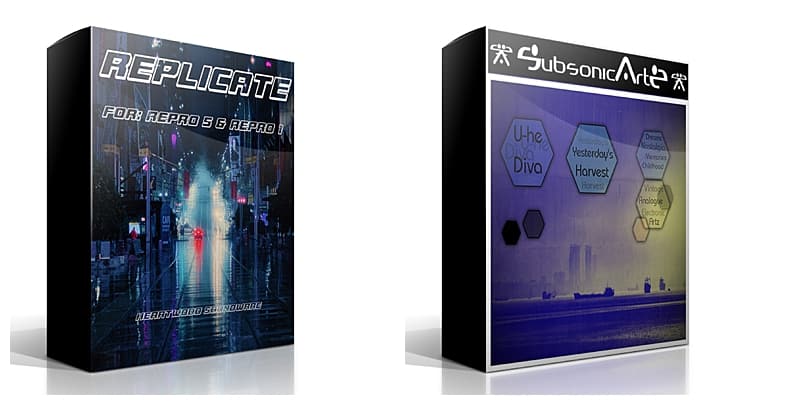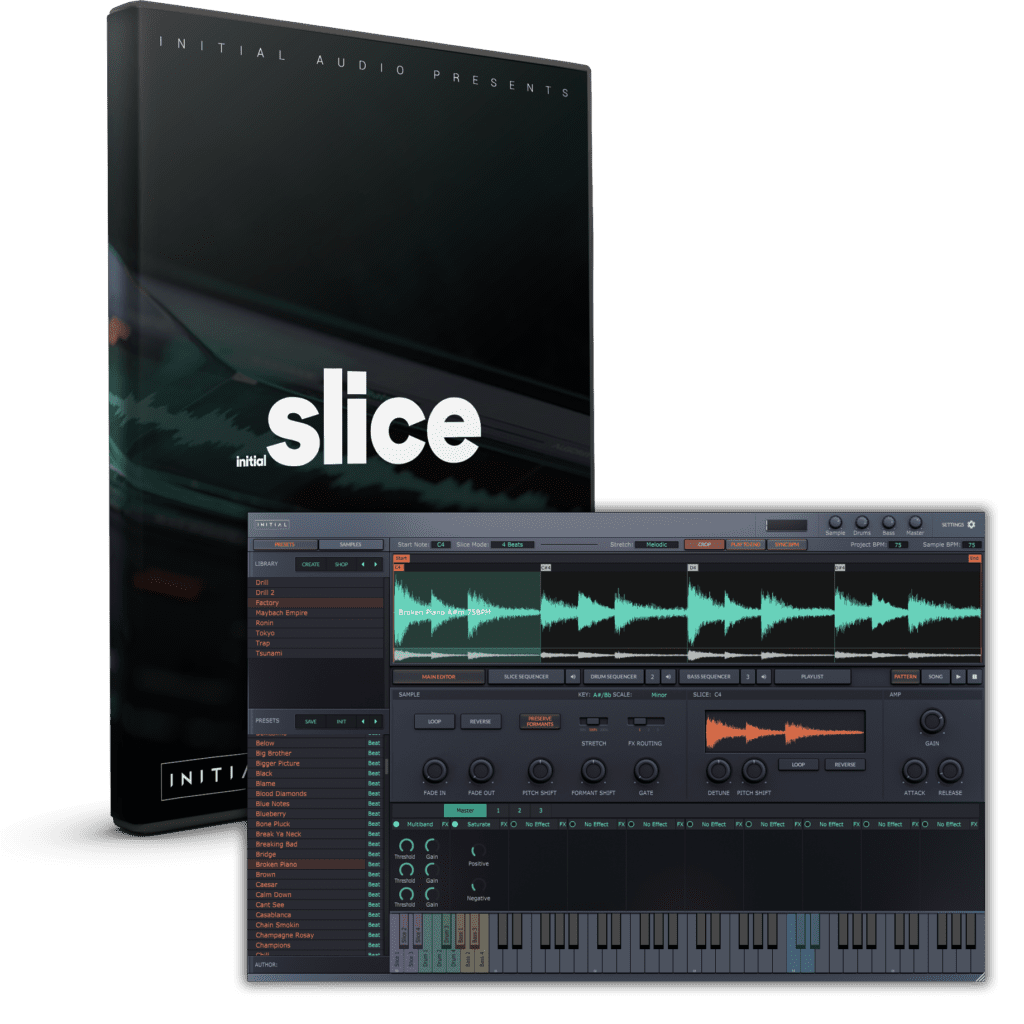Looking for an easy-to-use string quintet library that will provide melodic lines right out of the box? Look no further than Lyric Series String Quintet by Kirk Hunter Studios. This library was developed in the Native Instruments Kontakt engine and delivers the finest quality sampled sound with extremely detailed user control. Whether you’re a film scorer, video game composer, or just need some strings for your next project, Lyric Series String Quintet is perfect for you!
The Lyric Series String Quintet is the perfect choice for small string ensembles looking for an edge. Its innovative vibrato control and rapid-fire spiccato add intensity to any phrase, while its easy-to-learn interface makes it simple to get up and running fast. With multis for small ensemble work, the Lyric Series String Quintet is your new go-to for professional-sounding strings.

Lyric Series String Quintet from Kirk Hunter Studios
The Lyric Series String Quintet from Kirk Hunter Studios is designed to provide musical, melody lines right out of the box. The library includes recordings of a solo violin, viola, cello, double bass, and a full-string quintet. The focus on melodic lines makes this product a valuable asset for composers who are looking to shorten their workflow time.
The recordings are high-quality and offer a wide range of dynamics and expressions. In addition, the flexibility of the software allows users to create their own custom patches. As a result, the Lyric Series String Quintet is an impressive tool for anyone looking to add realistic string parts to their compositions.
While there are plenty of good-sounding solo string libraries out there, I found it interesting that for me, a professional string player, it took a lot of “fiddling” with the instrument to get really musical phrases and melody lines. It was easy to get nice “pads” and “fillers” for sure, but I really wanted a believable single, melody line.
Nothing out there, not even my older libraries, seemed to capture that certain essence you hear when listening to a professional player unless you took a lot of time to tweak whatever you were working on. This was both frustrating and enlightening.
Frustrating because it seemed like I was spending more time editing than actually playing, but enlightening in that I realized that if I really wanted something to sound realistic, I had to put in the extra effort. In the end, it’s all worth it when you hear your hard work come to life in a beautiful melody.
Intuitive, String-Oriented Legato Transitions
Over the years, there have been many attempts to create a legato sound using various techniques. Some of these methods have been quite successful, while others have fallen short. One common problem with many legato techniques is that they can sound clunky or uneven when played at faster tempos. Another issue is that some legato techniques only work well at certain tempos.
As a result, it can be difficult to find a legato technique that sounds good at all tempos. However, there are some legato tricks that can help to overcome these problems. For example, using slurs or hammer-ons can help to smooth out the sound at faster tempos. Additionally, practicing Legato with a metronome can help to ensure that the technique sounds good at any tempo. With enough practice, it is possible to create a smooth and polished legato sound regardless of the tempo.
There are many small details that go into making a good string performance, from the way the bow is held to the angle of the fingers on the strings. While there is no easy way to capture all of these details, the one thing that seems to be loudly apparent is the sound that happens when string players play larger intervals on the same string. (Especially cellos) It’s not really a true portamento and does not always happen.

It seems to occur most when the players need to move their left hand up or down from it’s current position to achieve the note. This often results in a sharp, almost percussive sound as the bow hits the string in a different spot than it was intended. While this might seem like a small detail, it can have a big impact on the overall sound of the piece.
Consequently, string players need to be aware of this effect and make sure that it is being used to create the desired musical effect. To create a more realistic and dynamic sound, Kirk Hunter Studios has implemented different playing styles into the instruments of the Lyric Series String Quintet.
sing calculated probabilities, they have been able to replicate the sound of different instruments being played in a more realistic way. This allows for a more natural and realistic sound when multiple instruments are being played at once. By successfully implementing these techniques, Kirk Hunter Studios has created a more realistic and dynamic sound that is sure to please any musician.
Realistic Bow Changes
As any musician knows, achieving a smooth, legato sound is essential to playing classical music. Unfortunately, many virtual instruments fall short in this area, producing a choppy, disconnected sound instead. This is especially noticeable when playing melodies that require a lot of string crossing, such as those often found in Bach’s works.
The problem is that most virtual instruments are unable to replicate the subtle movements of the bow that are necessary to produce a truly legato sound. As a result, the music can sound stilted and artificial.
However, there are some companies that are working on improving this aspect of virtual instruments, and with each new generation of technology, the legato sound becomes more realistic. With any luck, one day we will be able to enjoy the full range of classical music without ever having to pick up a real instrument.
But go listen to real performances with separated bowing. They’re not usually fluid, especially at faster tempos. It seems that the few libraries out there which have tackled this problem with some, if the little, degree of success have been met with negative critique, falling to claims that the “legato” is too abrupt or bumpy.
In my opinion, this is simply a case of people being used to hearing fluidity where there is none. And frankly, at slower tempos, it’s not really an issue. So I say give these libraries a chance. They may not be perfect, but they’re a lot better than nothing.
The Lyric Series Strings Quintet features realistic bow changes that allow you to create more nuanced and expressive phrases. By default, the bow changes are distinctly separate, giving you a clear and precise sound.
However, if you prefer a more “fluid” sound, you can certainly “connect” the bowing for a more continuous phrase. And of course, legato playing is also possible with either “slurred” or “fingered” techniques. As a result, the Lyric Series Strings Quintet provides you with a wide range of tonal possibilities to explore.

Unrivaled Vibrato Control
And then, there’s the issue of vibrato. I know of no professional string player who uses the same vibrato amount, speed, or fade-in time statically. In trying to capture vibrato, most of the time, (if handled at all) it is by means of assigning vibrato to a controller. Usually, this is just the amount of vibrato and nothing else.
This may work in some cases but it doesn’t give you much control over how the vibrato sounds. By its very nature, vibrato is an ever-changing articulation and to try to replicate it with a single control is like trying to put a square peg in a round hole – it’s just not going to fit very well. The other problem with using controllers for vibrato is that they are often located in inconvenient places, making them difficult to use whilst playing. What’s needed is a more expressive and realistic way to capture the nuances of this important articulation.
One of the most difficult things about playing a virtual instrument is replicating the natural vibrato of a real performer. This can often result in a clunky, forced sound that doesn’t sit well with the rest of the music. One way to avoid this issue is to have the samples be “baked in” with the performer’s own vibrato. This way, you can get a more natural sound that fits better with the rest of the music. Of course, this only works if you happen to love that particular performer’s style. If not, you have no options.
One of the most important aspects of creating realistic and believable strings samples is the use of vibrato. Violins, violas, and cellos all utilize vibrato to varying degrees, and it’s one of the main ways that string players add expression to their playing. Without vibrato, strings can sound thin and lifeless. However, too much vibrato can sound artificial and overbearing. The key is to find the right balance. When sampling strings, sometimes “no vibrato” samples are included.
This gives you the flexibility to transition to and from them as needed. But most of the time, one can hear the crossfades between different vibrato styles, which can take away from the desired “soloistic” sound. To avoid this issue, it’s best to use only one style of vibrato throughout your sample library. This will help create a more cohesive and realistic sounding strings section.
The Lyric Series String Quintet is a new type of string instrument that takes your playing style into account. The instruments (except the Romantic Guarnerius Violin) all have sensors that analyze your playing style and adjust the amount, speed, and fade-in of the vibrato accordingly.
This allows the Quintet to give you the closest approximation of a real string player’s style, making it the perfect choice for those who want to create realistic-sounding strings. Whether you’re a classical musician or a rock star, the Lyric Series String Quintet will help you get the most out of your performance.
Conclusion
The Lyric Series String Quintet is a library of sampled string instruments that were designed to be versatile and easy to use. The main focus of the library is to provide musical, melody lines right out of the box, which can save you time in your workflow.
The instruments were sampled in the Native Instruments Kontakt engine, which delivers the finest quality sampled sound with extremely detailed user control. The Lyric Series String Quintet is a great choice for those who want to create realistic-sounding strings.











